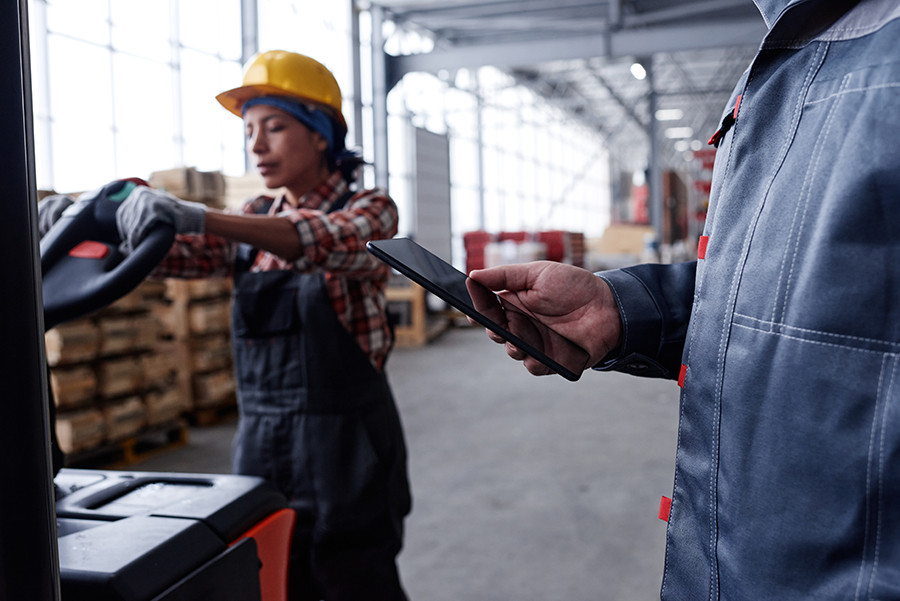Industrial work sites are full of risks from welding sparks to corrosive chemicals, energetic electrical conductors, confined spaces or loose valve fittings, the list goes on and on. Sometimes, a ‘little’ incident can turn into a hazardous one if not handled properly and with care. In managing and approving the permit-to-work process, frontline operators usually depend on paper forms and unofficial knowledge transfers from team members.
Since ‘going digital’ seems to be the talk of the town, digital transformation is now involving the building and construction industry. Site-based manual processes can now be abolished and get rid of with digitalisation. It also allows all processes and works to be faster, reduce paper waste and the entire team will be able to obtain information in real-time. The cloud-based system and mobile technology will enable an efficient, friction-free and fast process.
As we all know, authorisation in order to perform work under hazardous conditions is crucial in any part of the operation. Frontline operators need a documented procedure that details the preventative measures needed to ensure every task and personnel associated with work authorisation are carried out efficiently according to the procedures and policies that have been established.

Digital transformation is now involving the building and construction industry. Site-based manual processes can now be abolished and get rid of with digitalisation.
Challenges of Traditional Permit to Work Systems
Permit to Work (PTW) is a traditional, paper-based system that is used by companies from various industries to ensure the safe execution of hazardous work activities at operational facilities. It plays a
role in reducing hazards and the chances of accidents occurring while the frontline operators are working on high-risk tasks. Such tasks include work at height, blasting, working in a confined space or tunnelling, and others.

Traditional PTW systems are known to be time-consuming leading to employees becoming unproductive and inefficient
Traditional PTW systems are known to be time-consuming leading to employees becoming unproductive and inefficient. Unproductivity will produce employees who lose focus on the task at hand, fail to properly assess hazards and lose control of the work safety process. When this happens, unwanted incidents are more likely to occur. With that, building or safety managers must find new and efficient solutions to help them to tackle these complex issues.
ePTW – The Smart Work Permit System
Electronic Permit to Work (ePTW) is a smart system developed by TM R&D. Even though ePTW is mostly used by construction and manufacturing organisations, the system can be applied in other industries as well. It is also a great solution to replace the paper-based system to handle hazardous tasks and to set yourself apart in competitive industries. This system requires all employees, especially the frontline operators to follow in order to ensure that work is properly planned and operated.
How ePTW improves frontline operators productivity, safety and efficiency
1. Minimise waiting times
As we all know, those who work in essential services need to move fast as they are dealing with a number of important matters including people’s lives and their own. With ePTW, frontline operators can minimise the main factors of indirect productive time shifts such as setbacks in seeking permit approval, delays due to validation efficiency or employees and material movement. Permit mobile application can reduce permit waiting times and this will successfully reduce the main contributor to the indirect productive hours which is a delay in getting people and materials to the job site.
2. Efficiency and boost productivity
The paper-based systems are lengthy and require long hours to fill in the forms as well as tag writing and transporting paper from one place to another. This further proves that the traditional PTW systems lack efficiency which undoubtedly will affect the frontline operators efficiency. Through ePTW systems, we can reduce the lost time in performing job safety analysis, permit planning and approval as well as reusing preapproved isolation lists.
3. Decreased incidents and hazards
Frontline operators face crucial physical and emotional challenges daily as they are working in hazardous work conditions. Fortunately, with the ePTW system, hazards can be controlled as managers can quickly identify and solve any conflicts that occur during work operations. Besides that, ePTW system helps to ensure the use of personal protective equipment (PPE) and safety apparatus will be imposed on site. Minimising risks for hazards will give frontline operators peace of mind and this indirectly will make them empowered to perform and accomplish their field duties.

With ePTW system, hazards can be controlled as managers can quickly identify and solve any conflicts that occur during work operations.
Digitalise PTW the TM R&D way
It is undeniable that technology has allowed us to live our life comfortably and smoothly. It provides many benefits and one of them is effective management. Handling a construction project and high-risk activities is a heavy task because once you fail to follow the procedure correctly, you might face the consequences. Switching from paper to digital brings convenience to every organisation and it will quickly pay off once it is fully deployed.
Today, ePTW has been successfully deployed and used by TM with up to 5500 users. This further proves that ePTW has helped frontline operators who are working hard to provide services to the public by giving them a workplace that provides security, productivity and efficiency.
About TM R&D
Established in 2001, TM R&D is the innovation arm for TM Group focusing on creating smarter ecosystems to make business and life easier for a better Malaysia. TM R&D’s solutions are clustered around four (4) pillars namely Intelligent Platforms, Data Brokerage, Connectivity/Tools and IR4.0/Digital Solutions. Growing from strength to strength since 2016, TM R&D has won multiple global awards and generated more than 2,800 Intellectual Property Rights (IPRs) and 1,400 digital assets to date. TM R&D’s innovations are all developed in-house and cut across multiple verticals such as Utilities, Retail, Agriculture, Healthcare and Education with safety and productivity as the top priority.
For more information about TM R&D and its innovations, visit www.tmrnd.com.my or email your inquiry to business@tmrnd.com.my or follow them on LinkedIn (TM Research & Development) for more news and updates.

